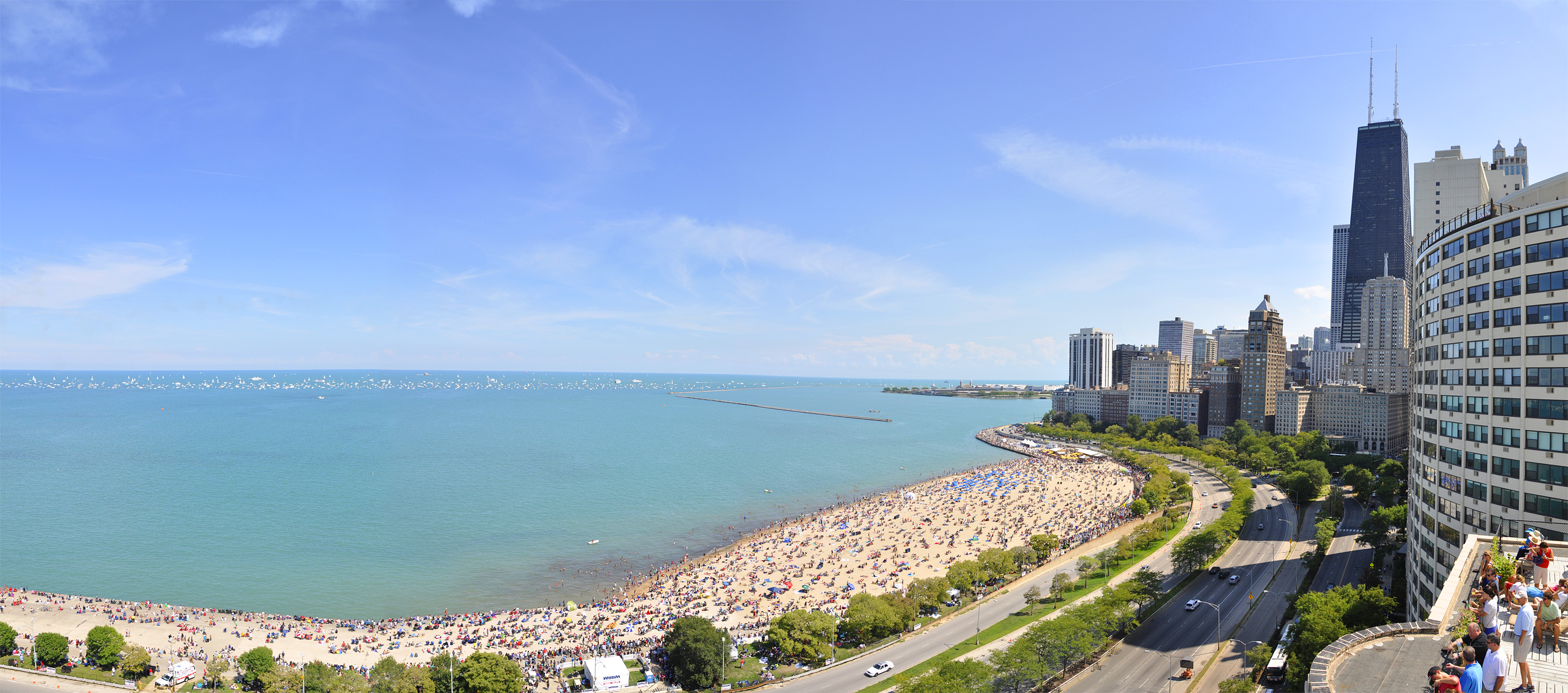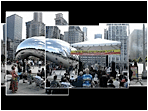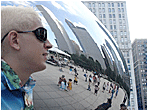2012 Chicago Air & Water Show
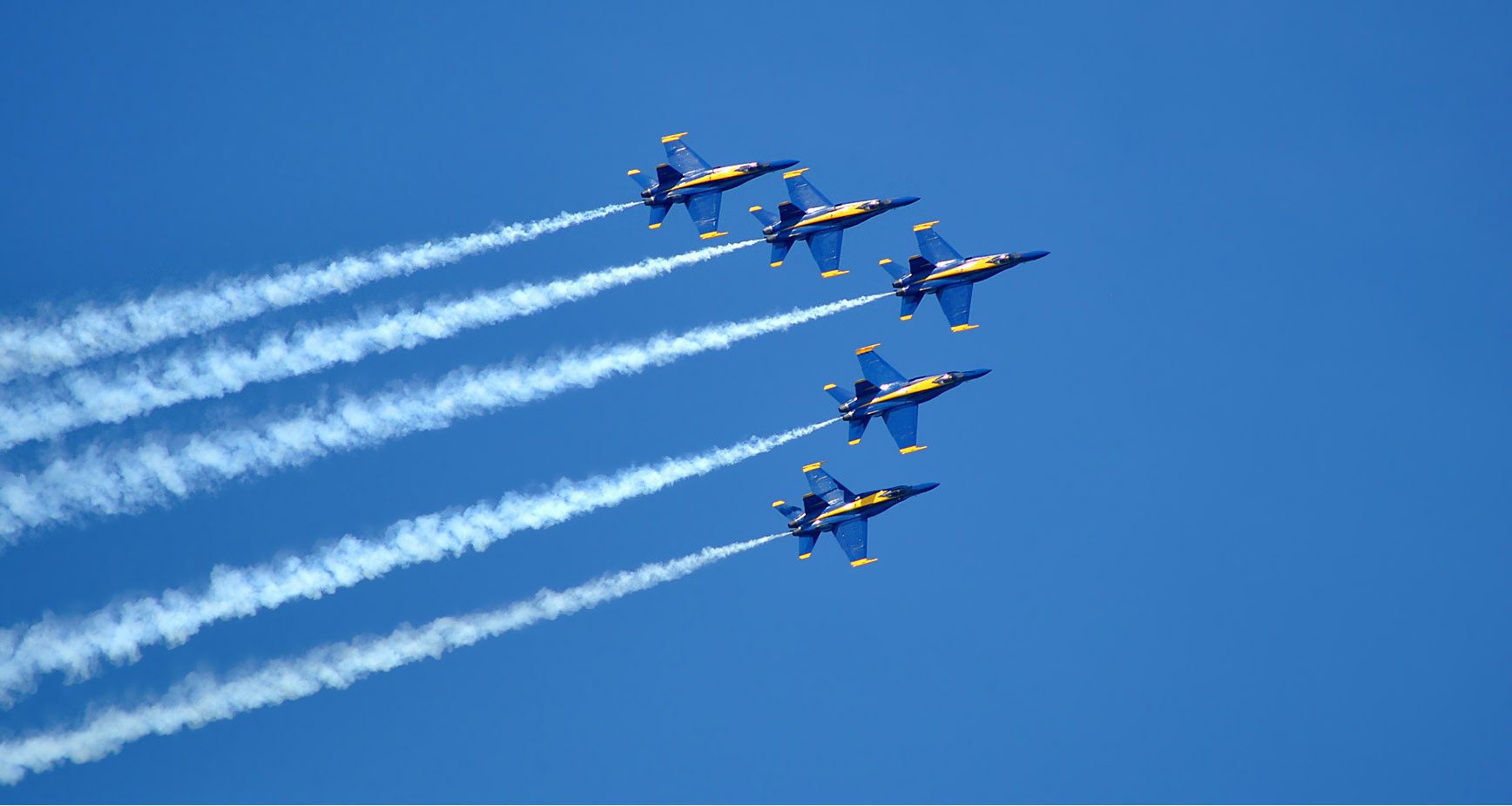
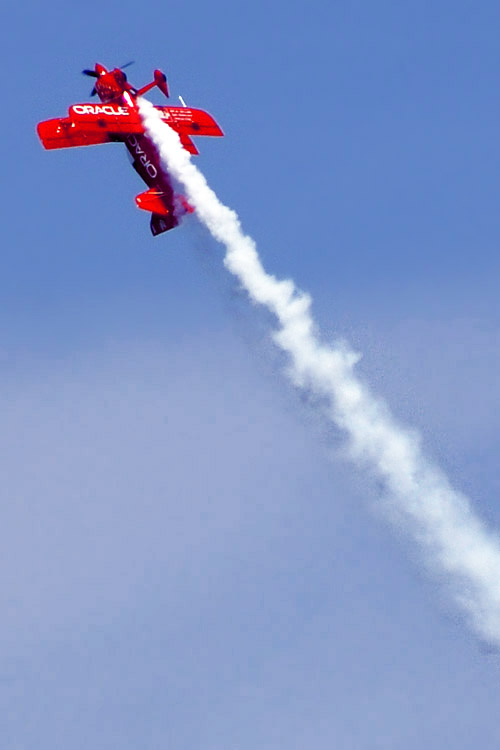
Sean D. Tucker & Team Oracle

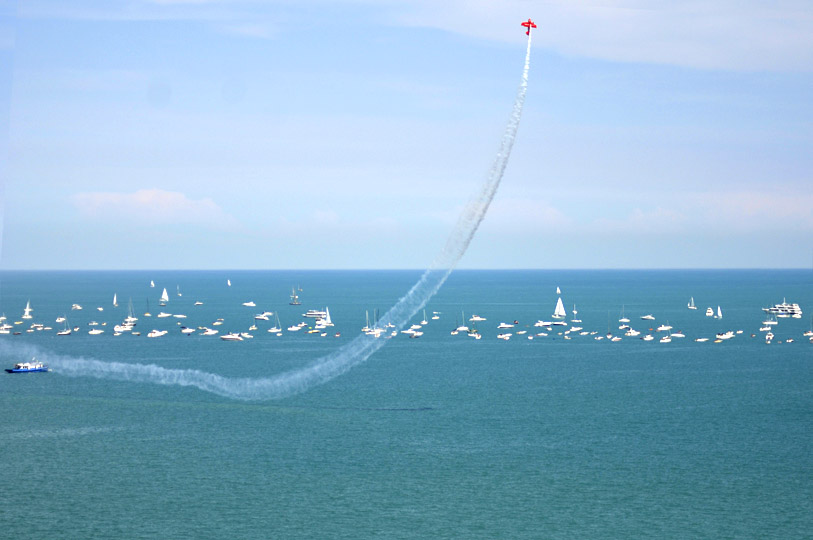
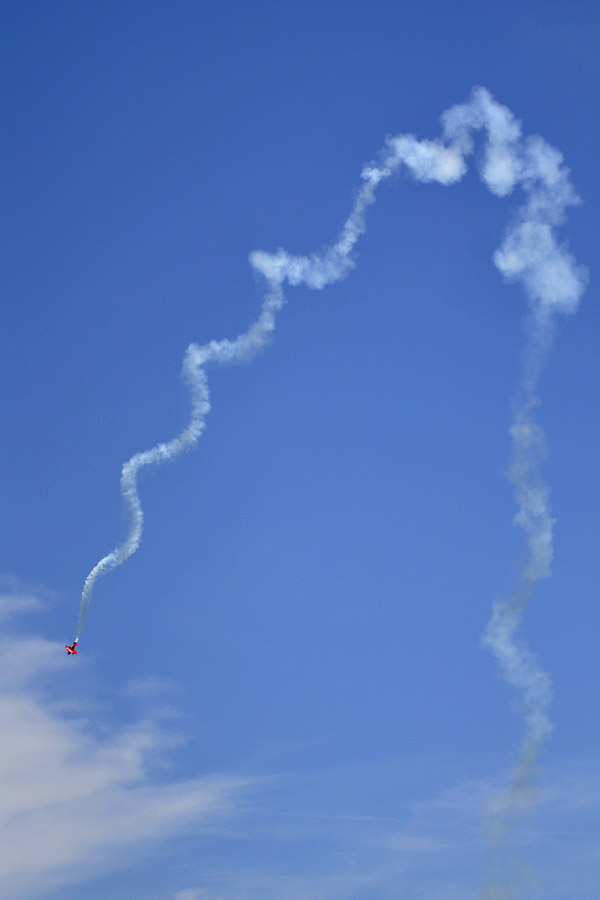
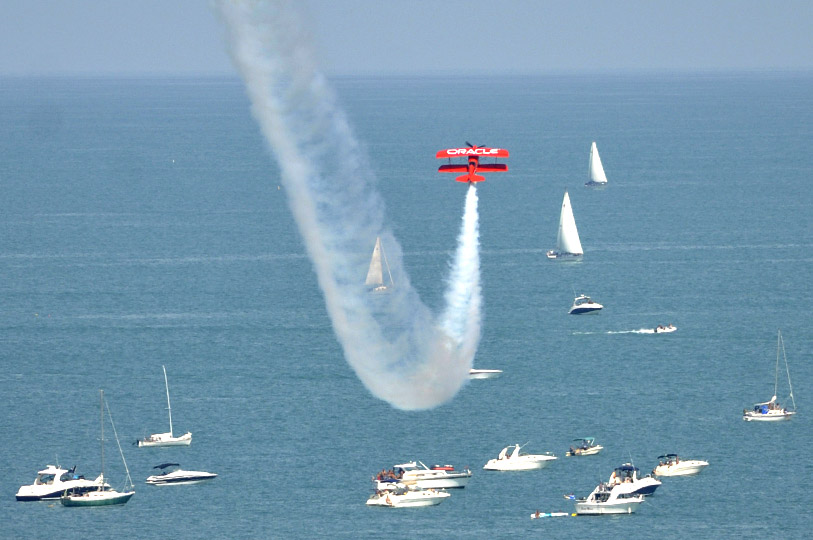
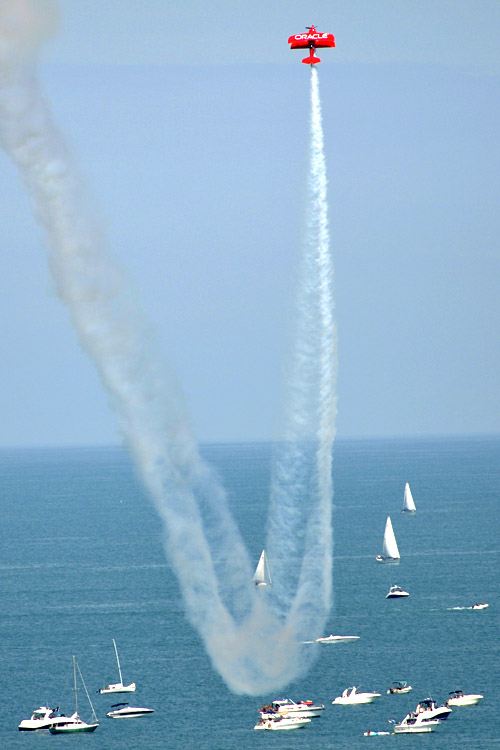
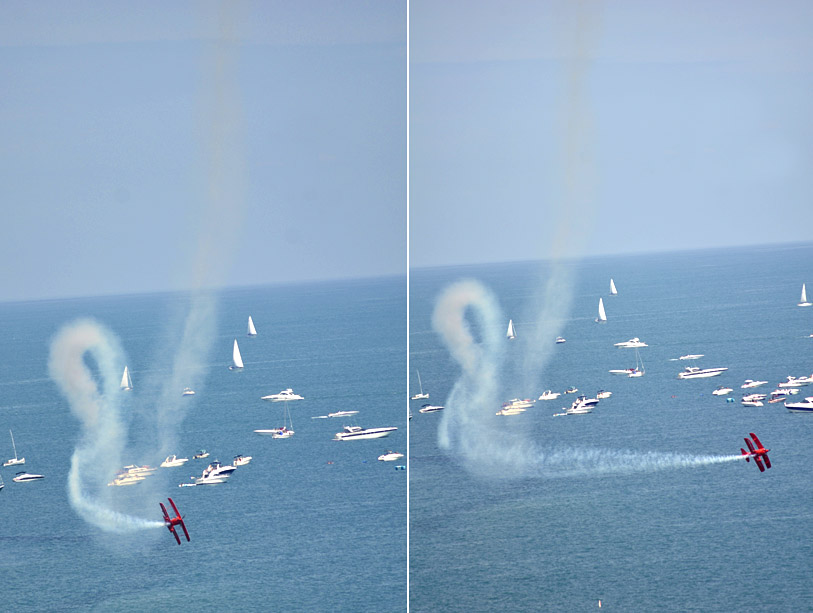
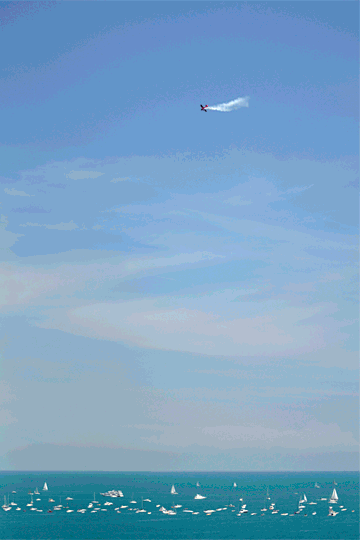
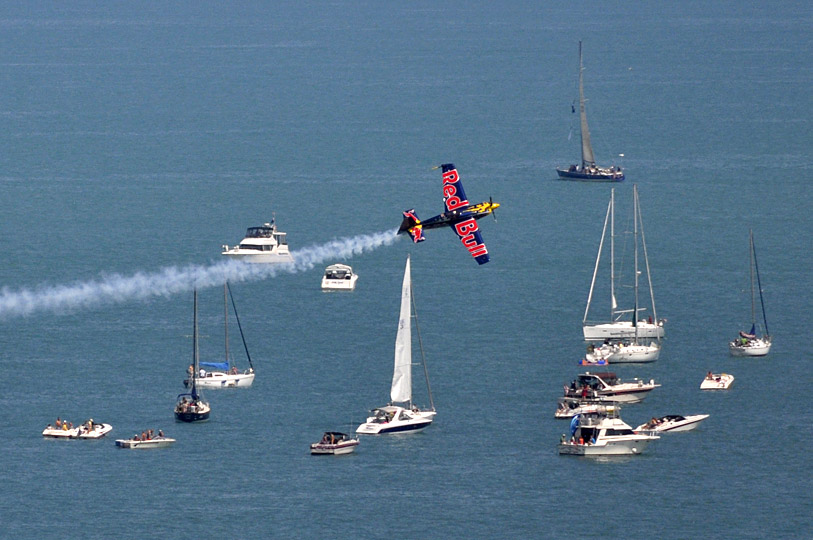
Kirby Chambliss in the Red Bull Edge 540
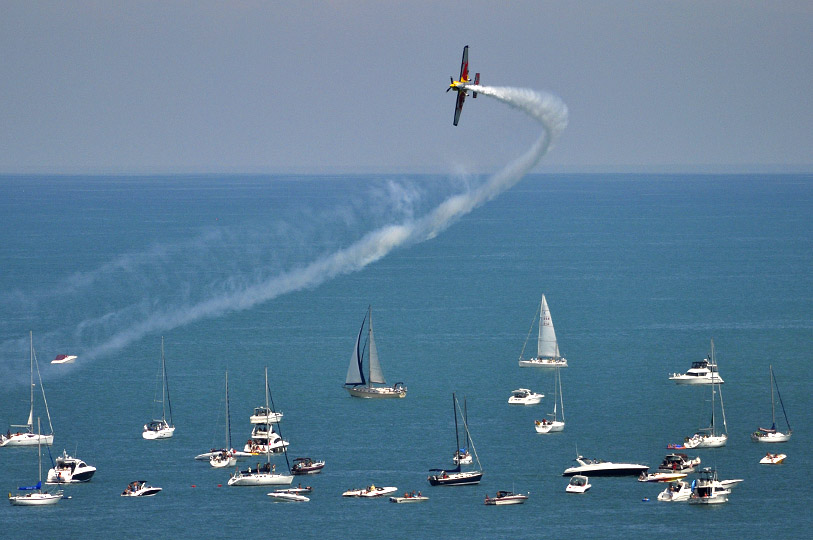
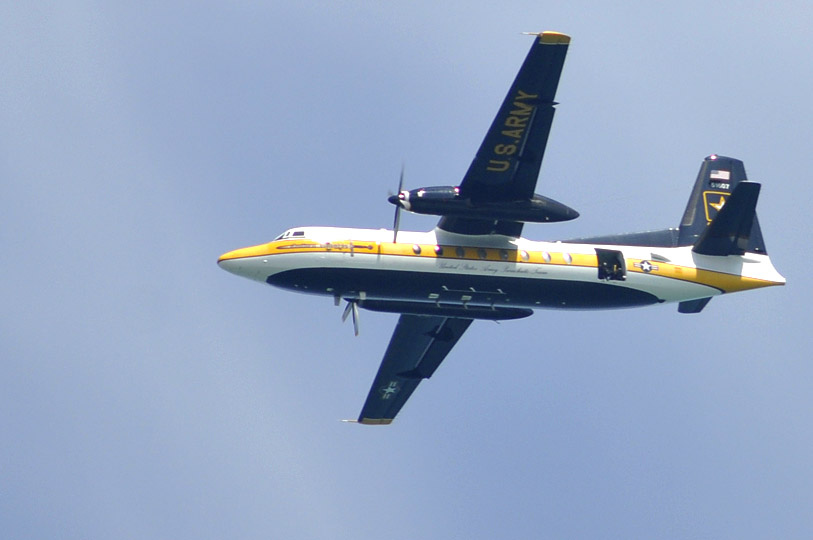
A C-31A Troopship circles overhead dropping off members of the U.S. Army Golden Knight Parachute Team.
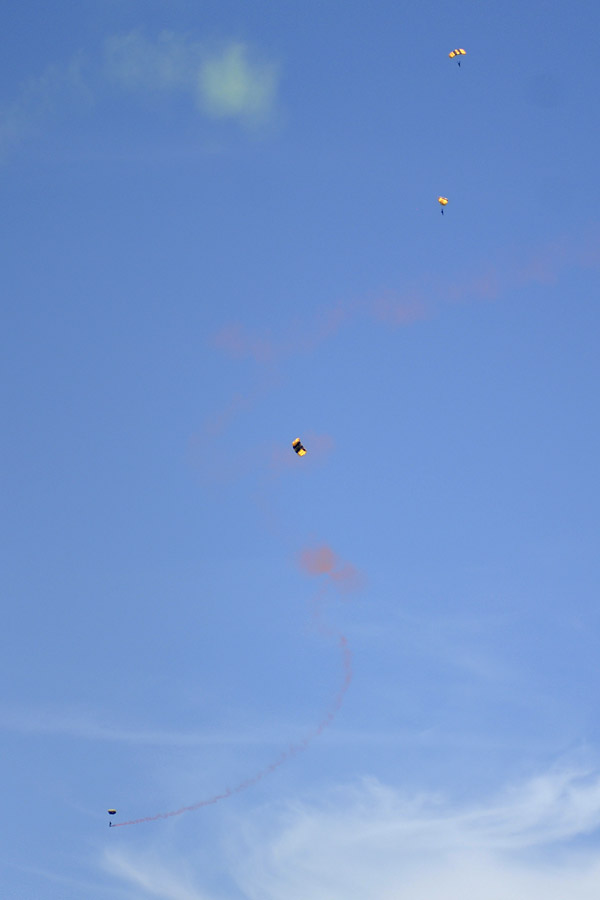
Golden Knights jump from about 12,500 feet in the air and
approach North Avenue Beach at speeds exceeding 120 mph.
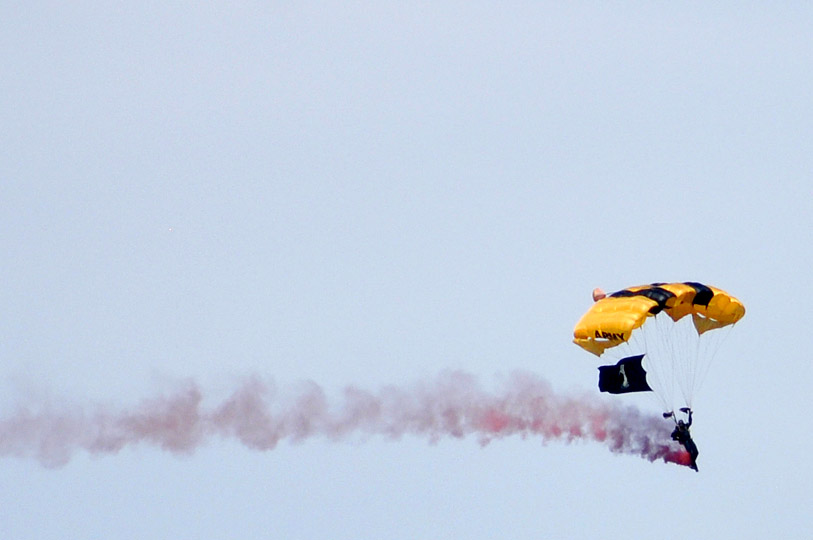
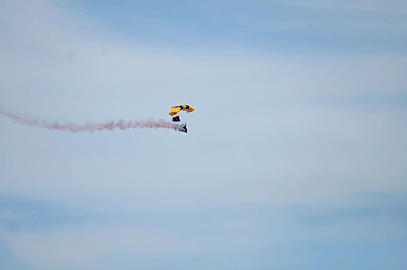
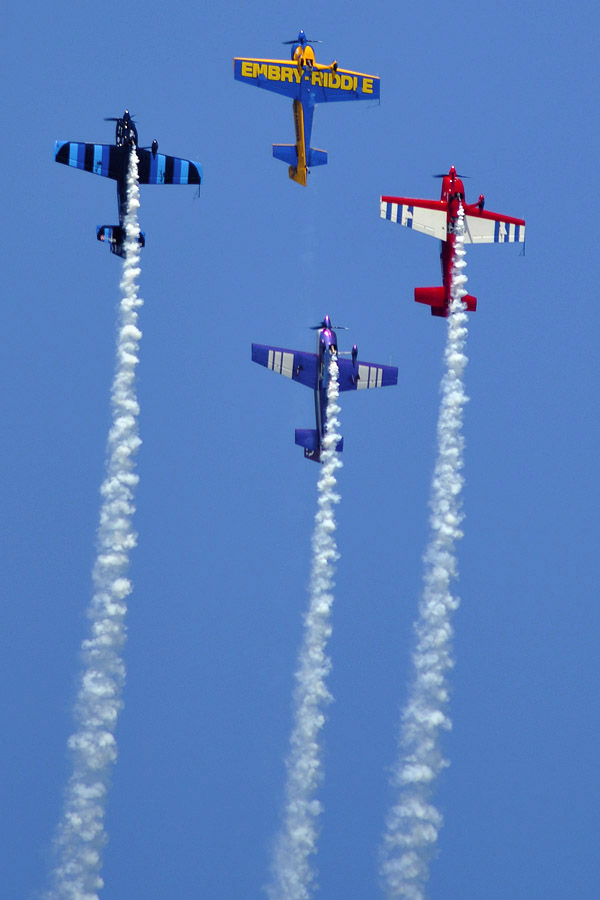
The Firebirds.
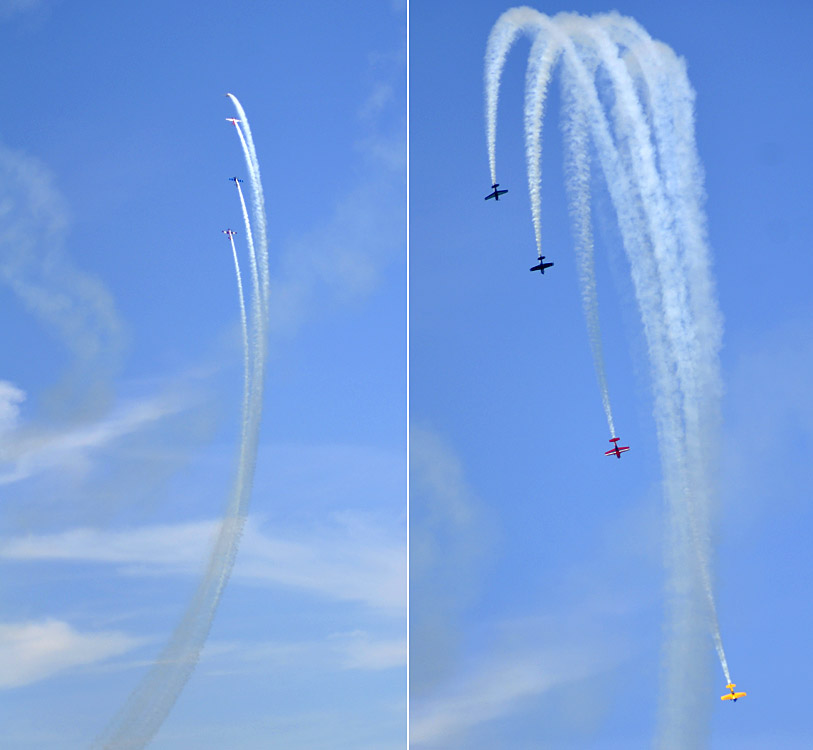
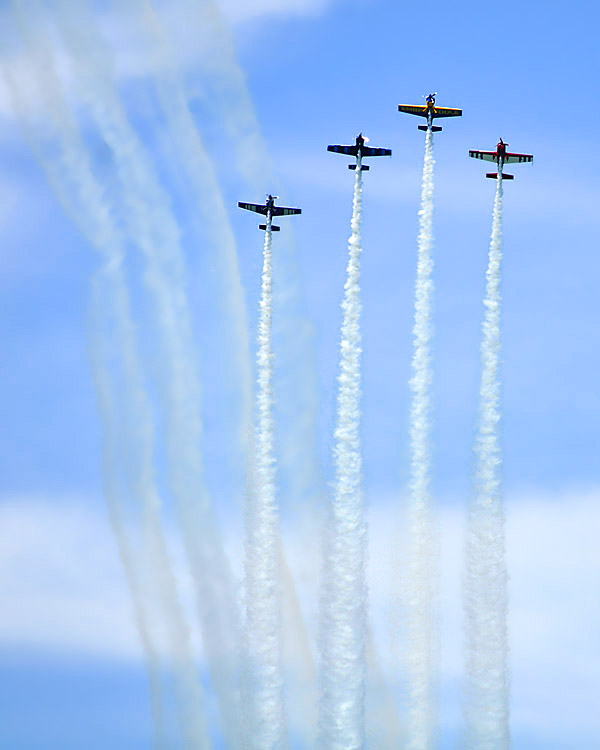
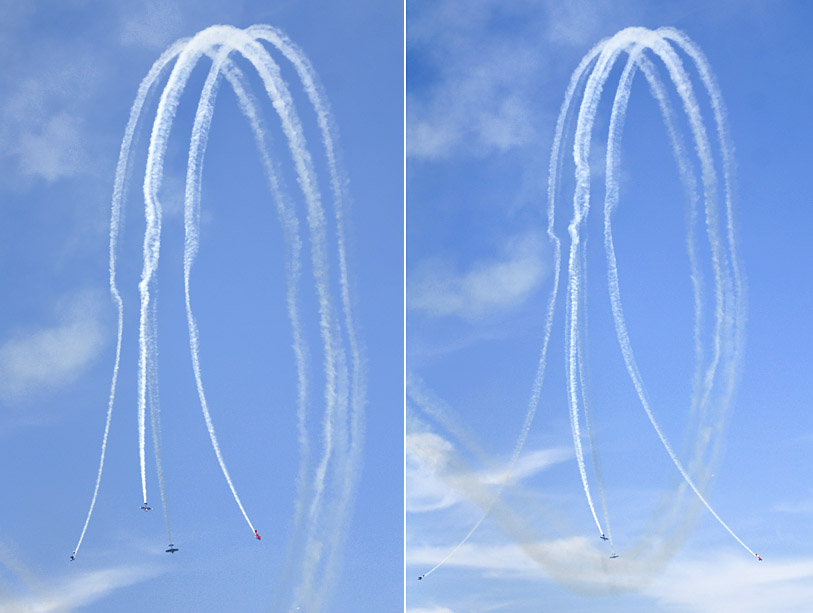
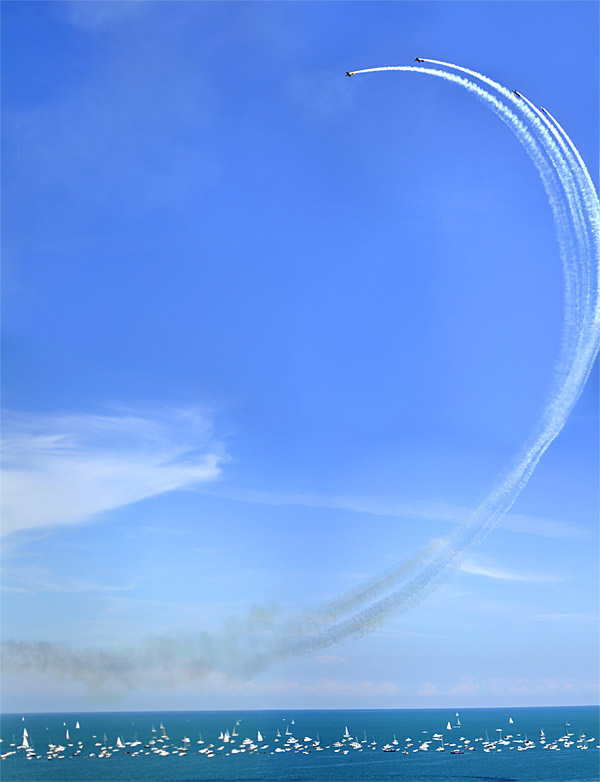
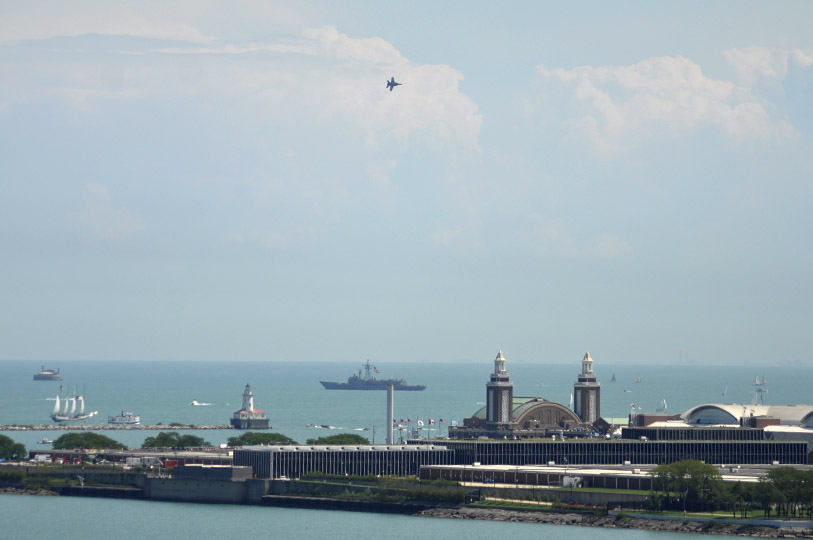
Out of nowhere, an F-18 Super Hornet screams past the lakefront and makes a turn over Navy Pier.
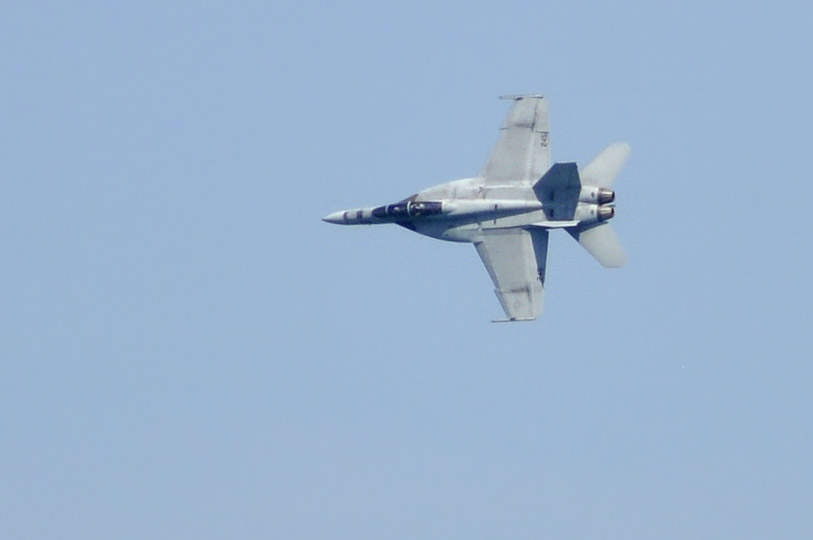
The F-18 Super Hornet is the successor to the F/A-18 Hornet which is flown by the Blue Angels.
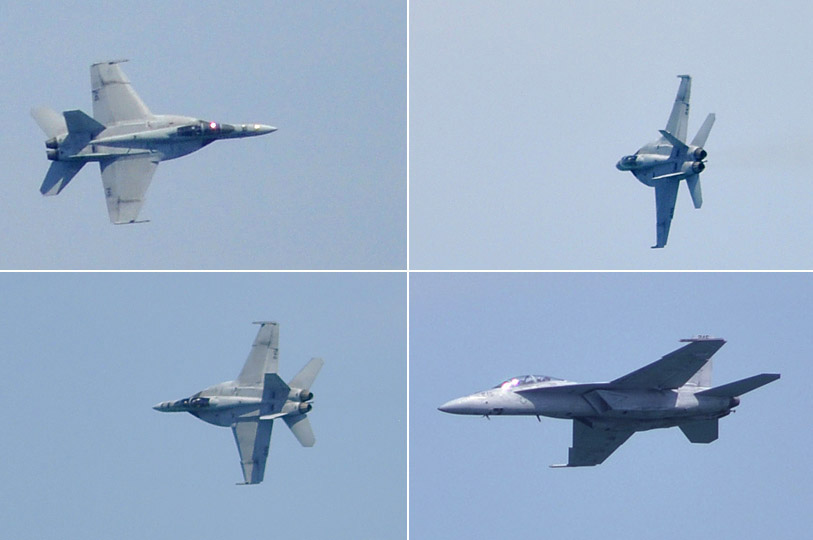
It was challenging to get a decent shot, but here are a few glimpses where you can make out the
rectangular engines intakes which set the F-18 Super Hornet apart from the F/A-18 Hornet.
The Super Hornet is also 25% larger, can fly 40% further, and carry more weapons than its predecessor.
The older Hornet, however, is more suitable to Blue Angels' needs due to its light weight and maneuverability.
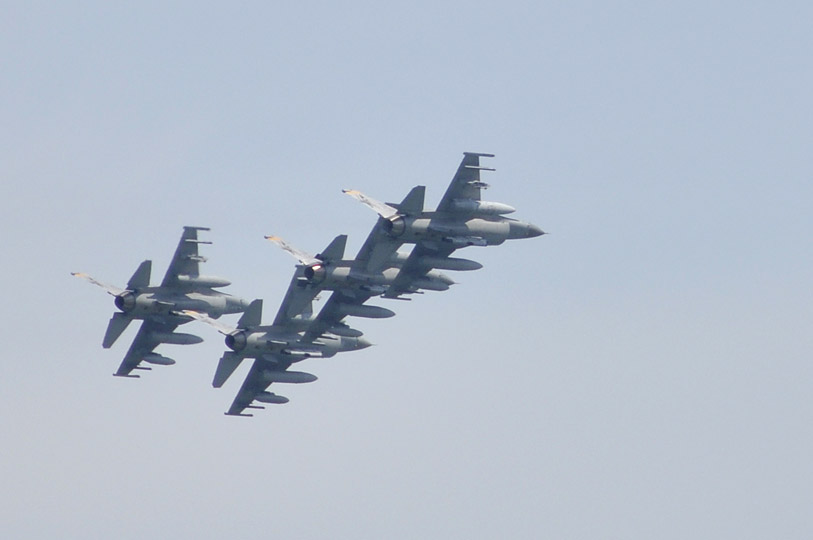
A squadron of F-16 Falcons make a bref appearance.
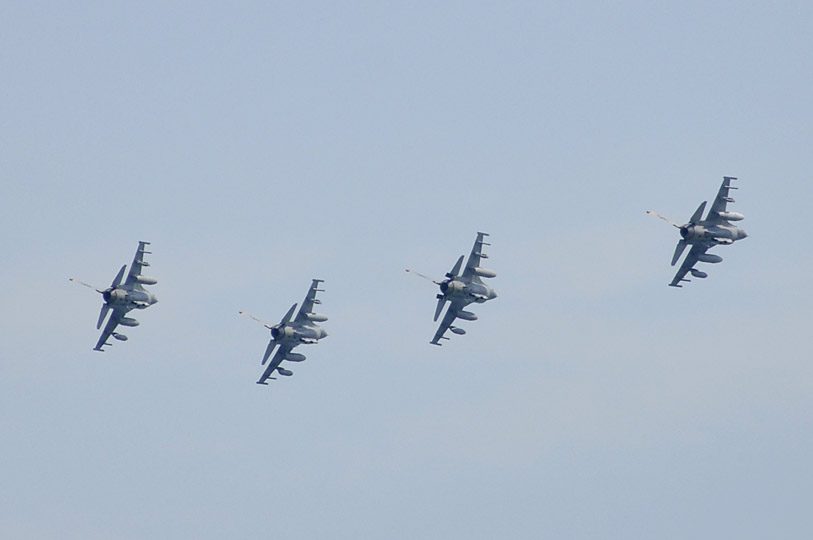
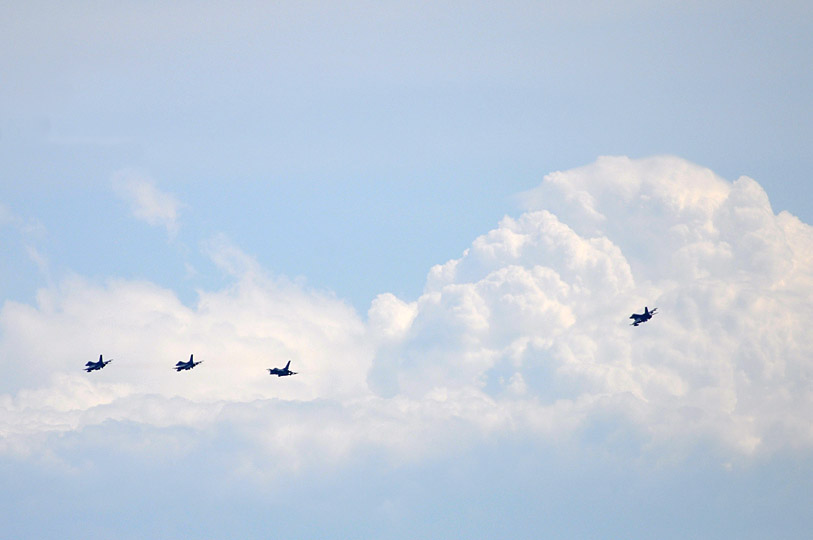
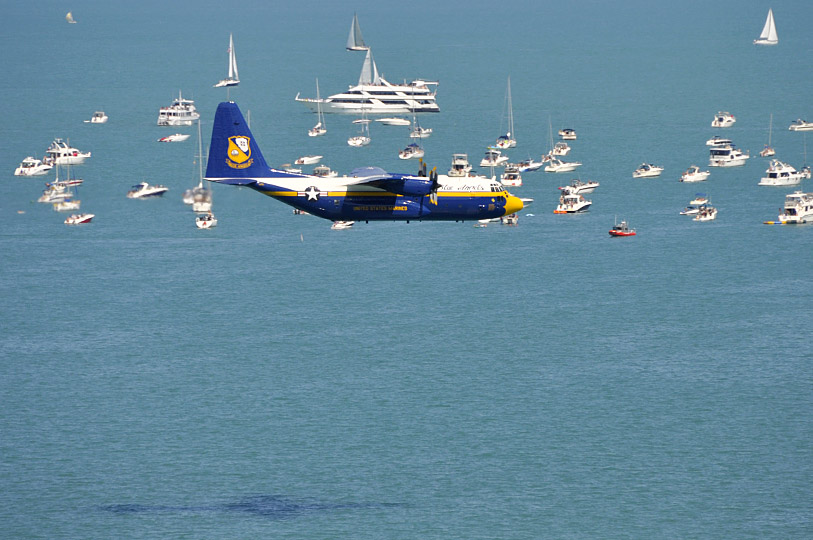
The Blue Angels' C-130 "Fat Albert" drops down for a low-altitude, flat pass that reaches 370 MPH.
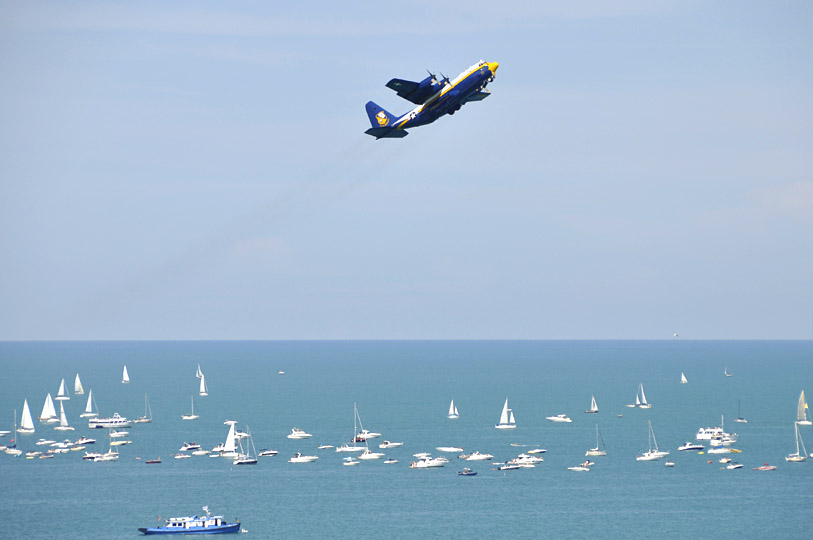
As if to say "hey, I can do this stuff too" the hulking beast pulls up sharply making use of 4,500 horsepower
per engine to execute a maximum effort climb at an impressive 45 degrees.
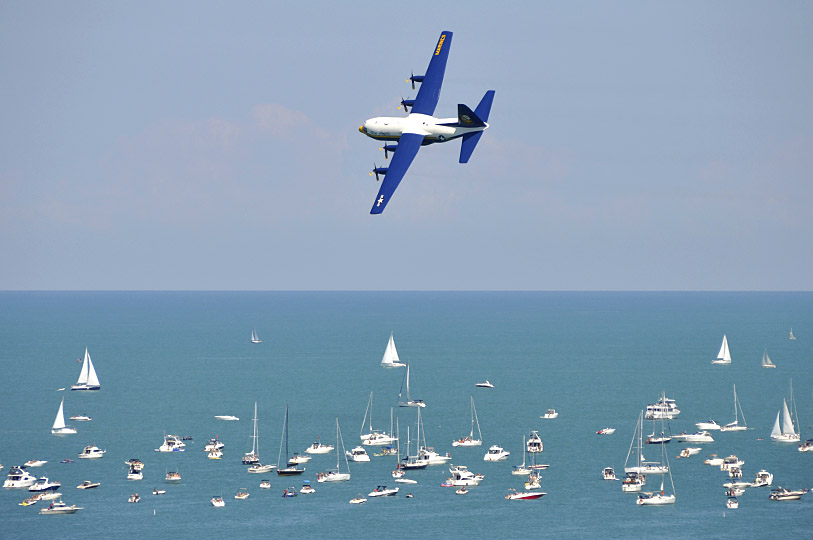
The flight crew of "Fat Albert" demonstrates the C-130's minimum radius turn.
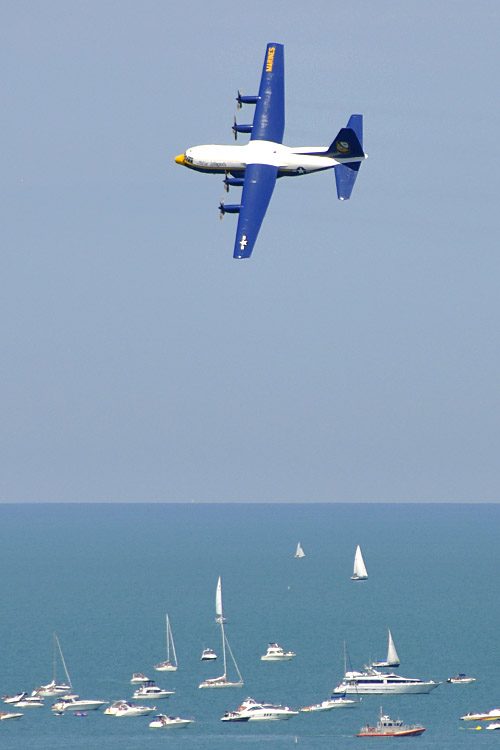
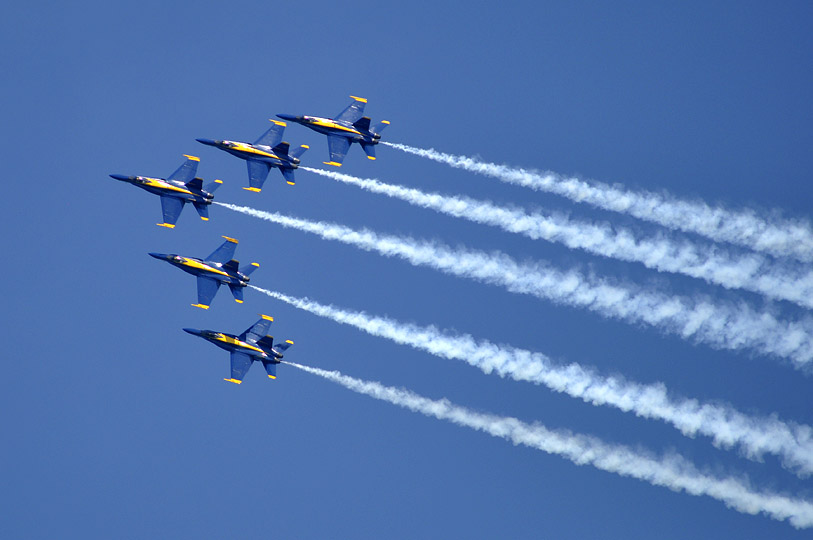
The Blue Angels make a dramatic entrance.
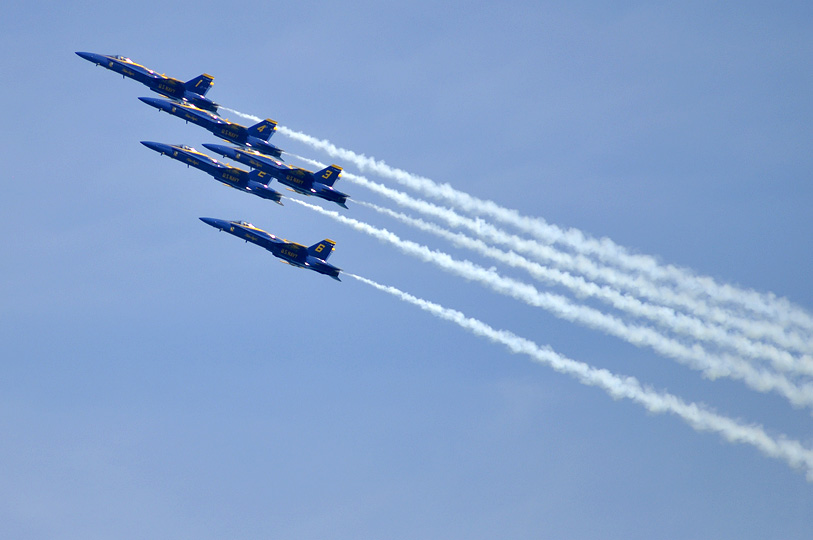
Enjoy the show — each one of these F/A-18 Hornets cost a tidy $21 million.
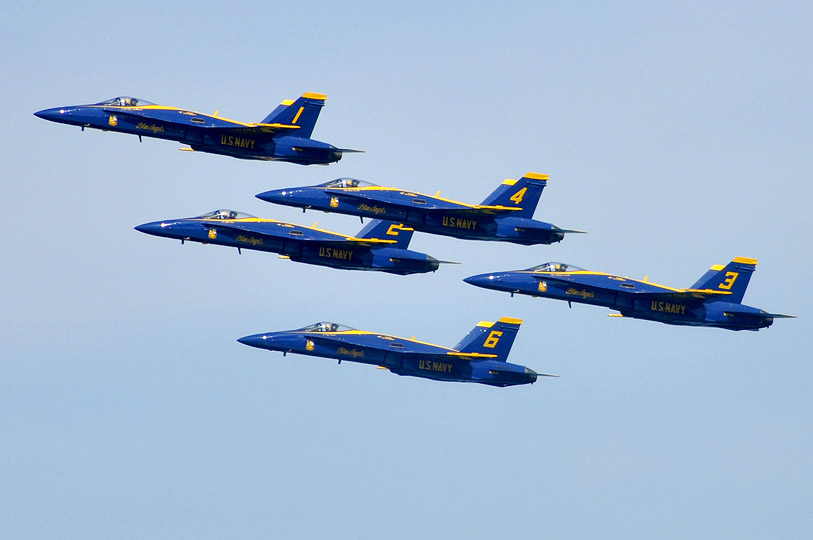
I count about $105 million flying past me at around 400 MPH!
That's probably faster than how I could think to spend a cool 100 million.
We had a pretty good view of the show from a balcony overlooking Oak Street Beach.
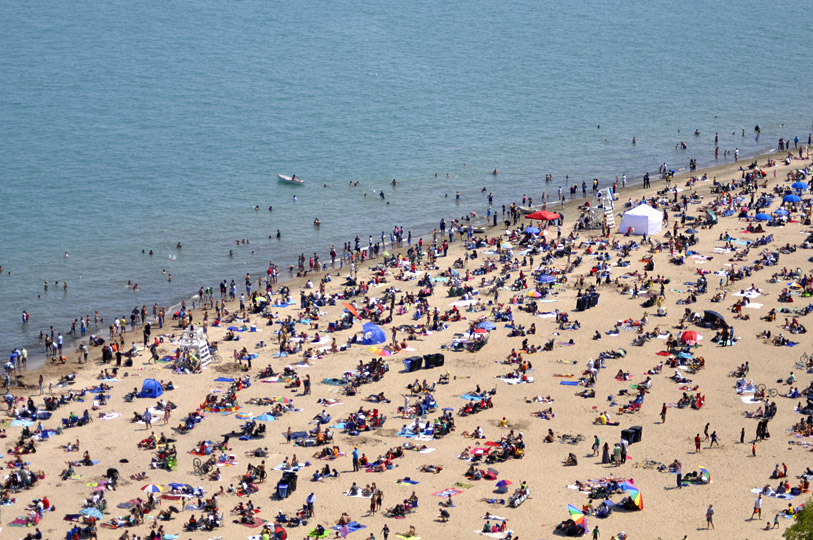
Many had staked out good seats on land.
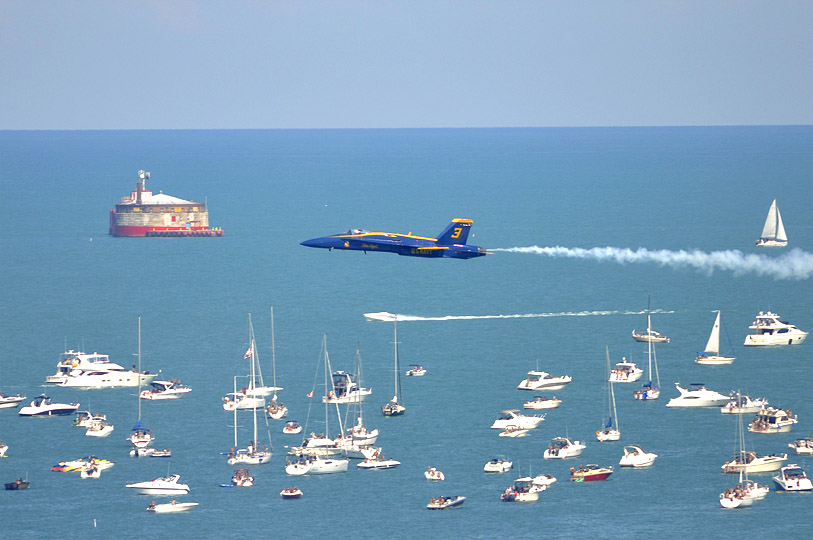
Some enjoyed the show from the water.
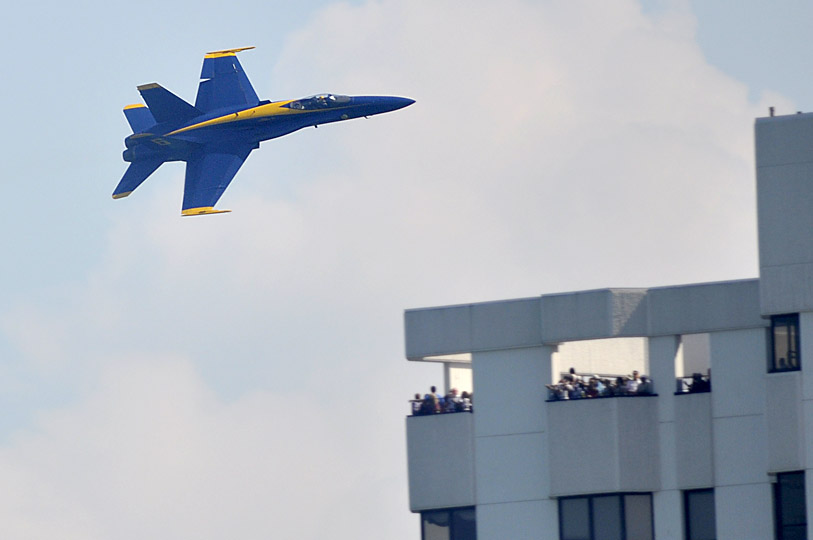
And a few with seats on these rooftop balconies might have needed earplugs.
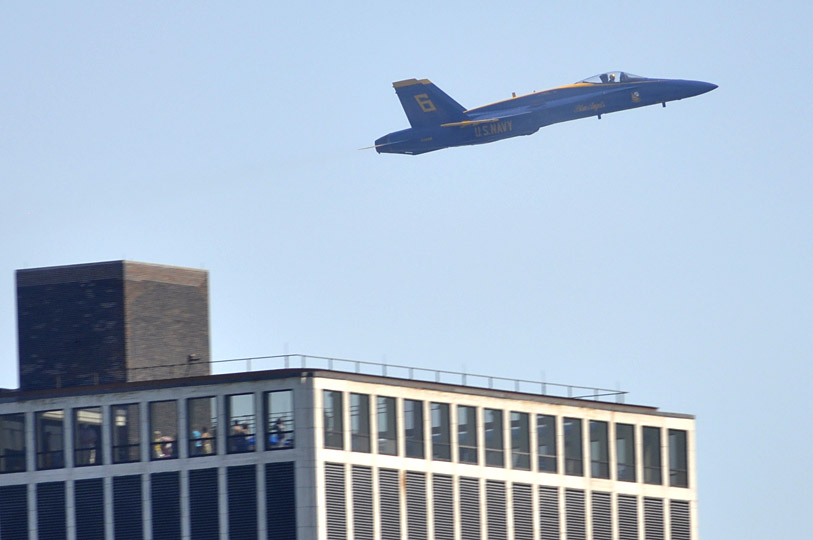
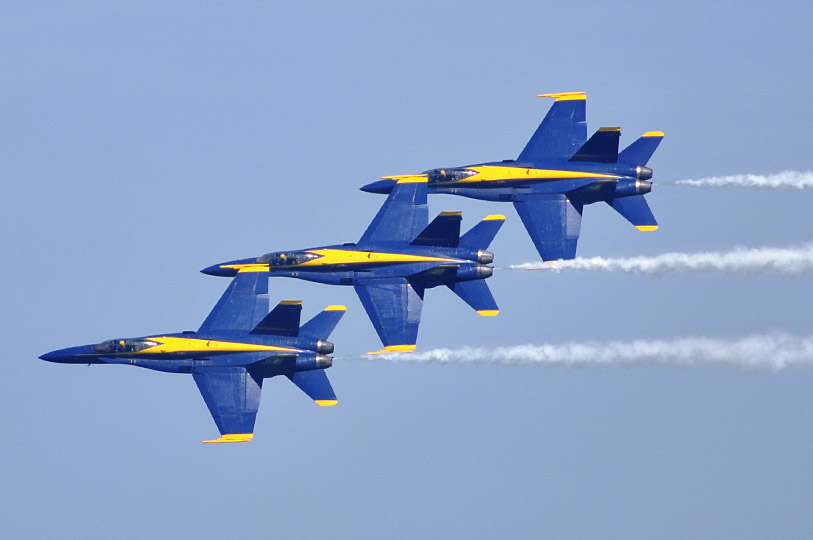
Blues #1, 2 and 4 re-group into formation and prepare for their next sequence of manuevers.
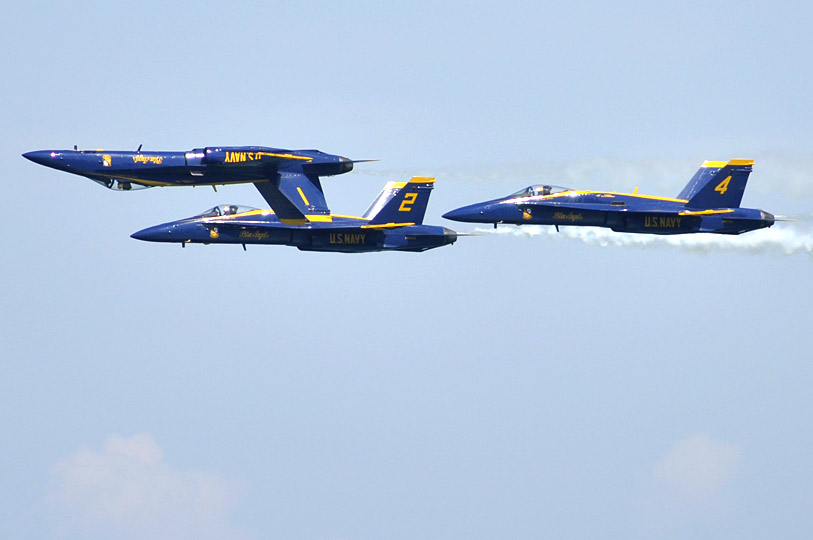
I think this was supposed to be the classic double farvel formation, but Blue #4 isn't inverted and Blue #3 is nowhere to be seen.
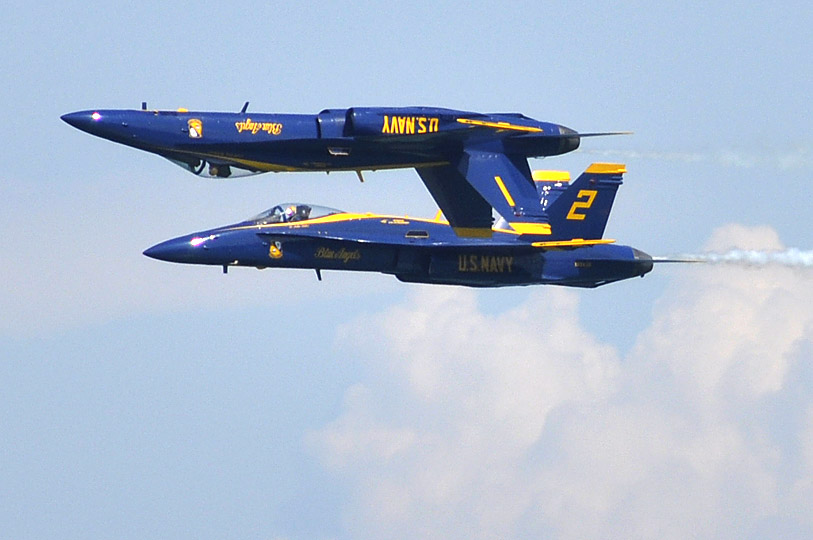
Still, pretty freaking awesome.
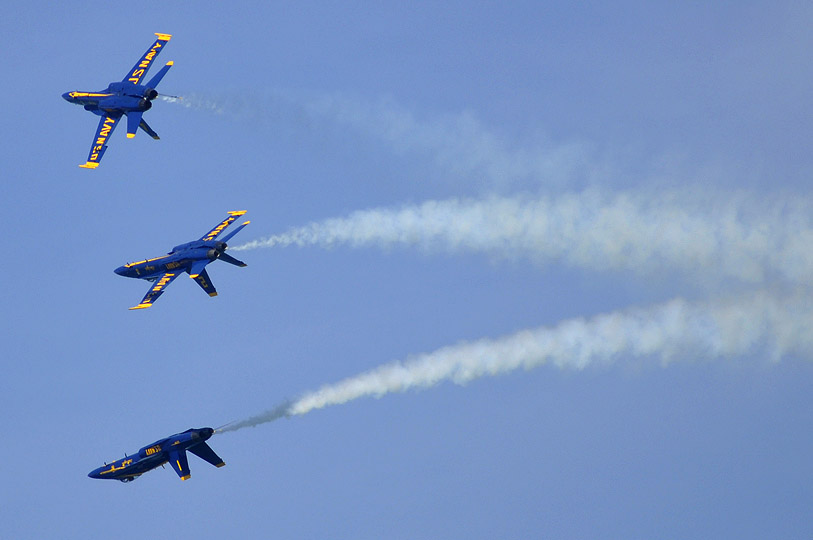
"... Ready break!"
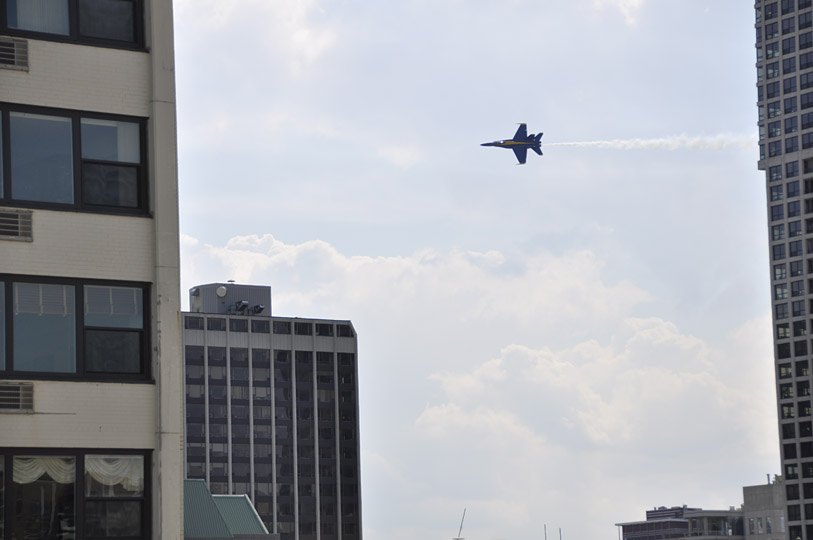
Vacant skies filled with the thundering sound of jetstreams are an ideal time to play "spot the aircraft".
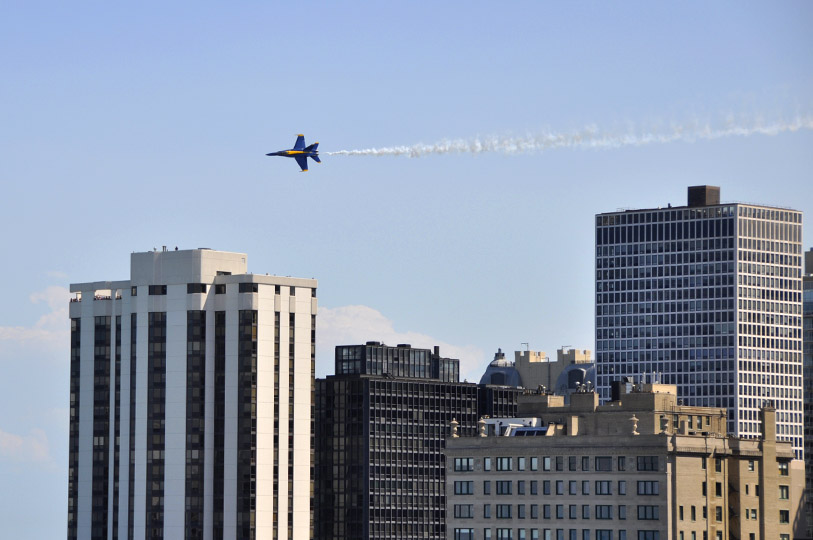
Here I spot Blue #3 getting ready for a lakefront pass.
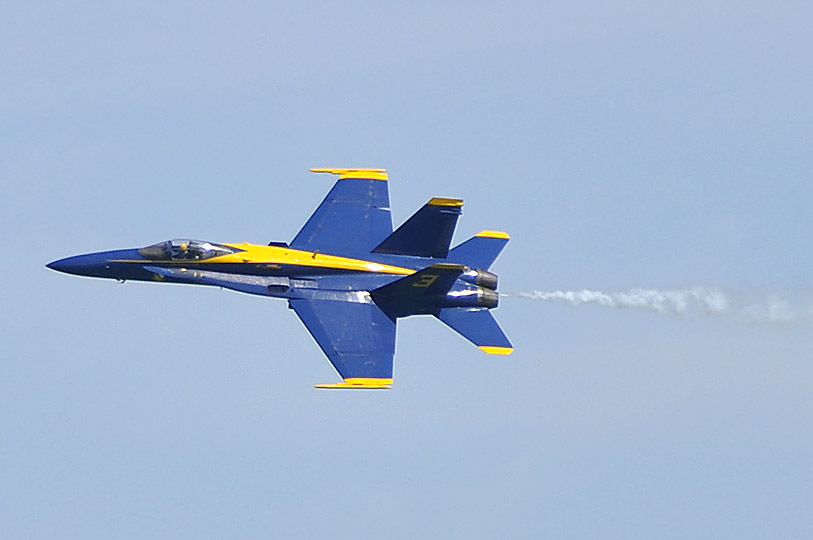
Since #3 was seemingly absent from the double farvel manuever I hope he's got something good in store.
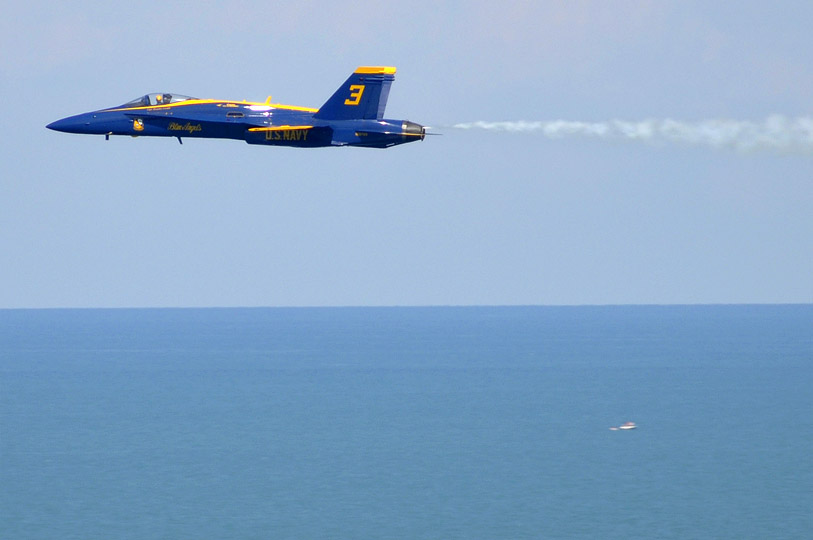
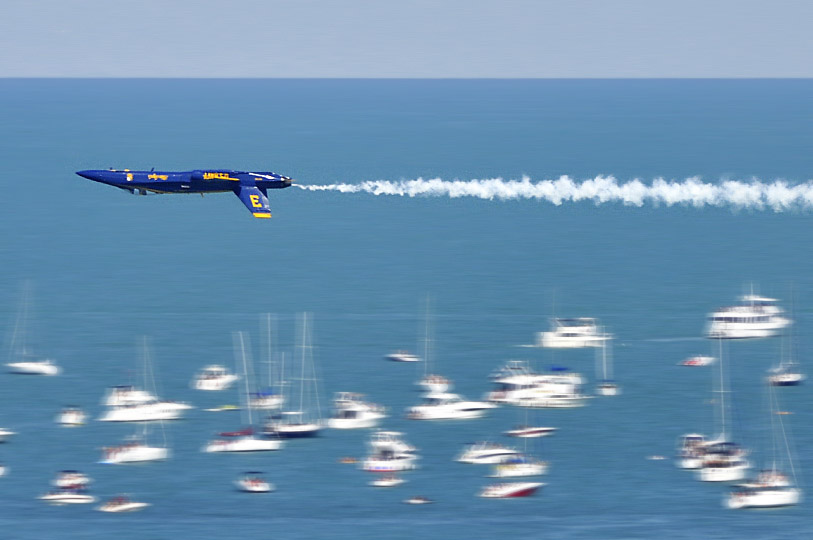
Blue #3 rolls inverted and prepares for an opposing inverted to inverted roll manuever.
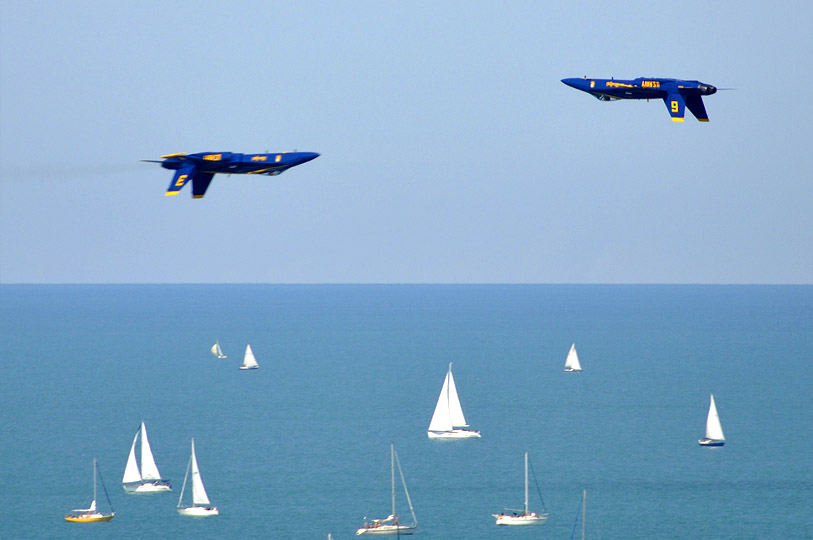
Nice!
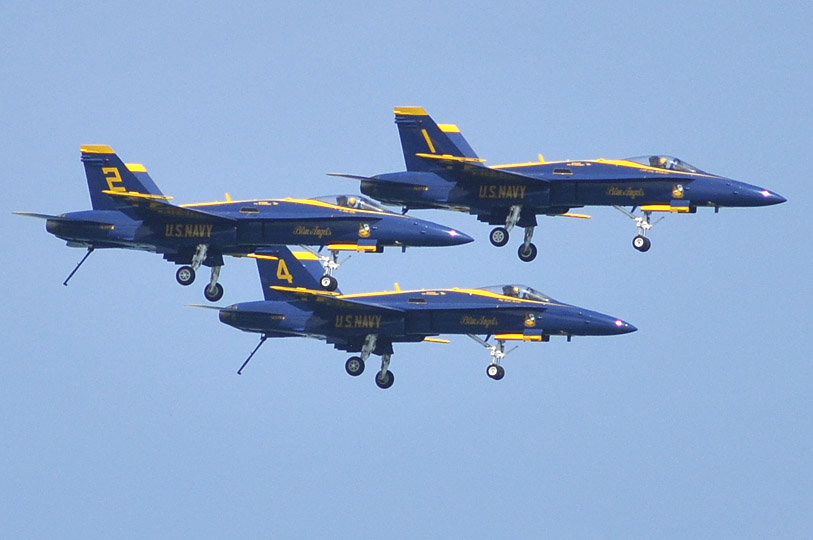
Blues #1, #2 and #4 demonstrate the difficult transition from the cruise to the landing configuration.
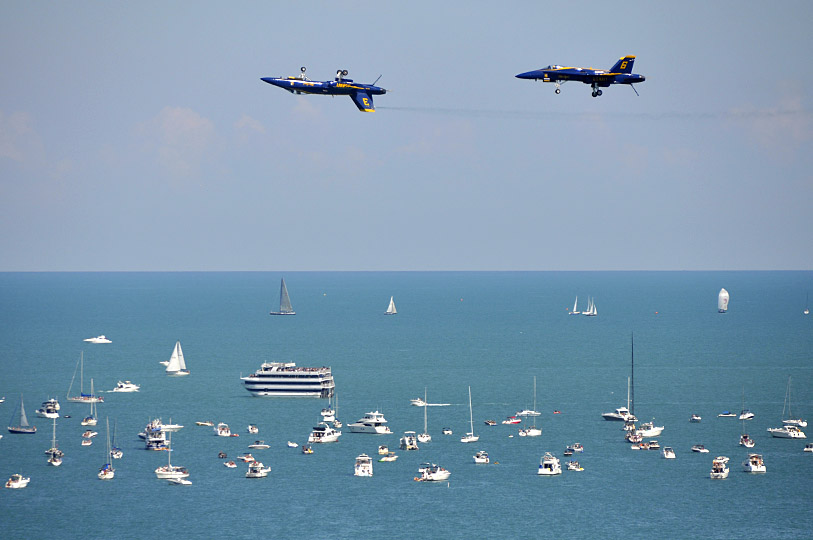
Meanwhile Blues #3 and #6 approach from the opposite end also with landing gear and tailhook down.
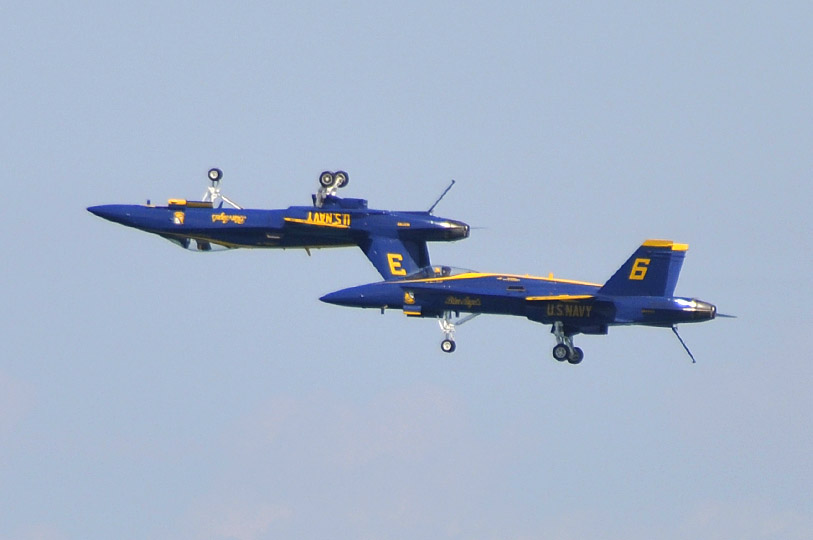
Blue #3 has rolled inverted as #6 approaches to establish a mirror image formation called the fortus.
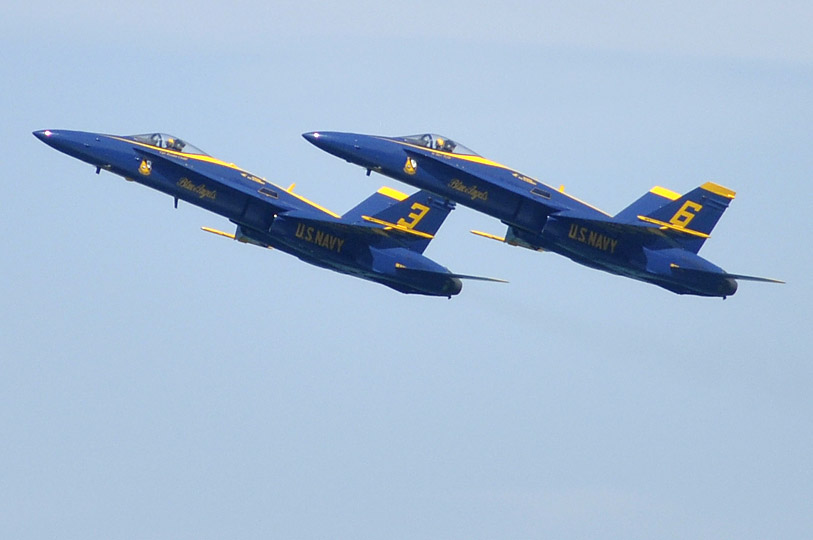
Blues #3 and #6 perform the slowest maneuver of the show, a section high alpha, demonstrating the slow speed handling characteristics of the F/A-18 Hornet.
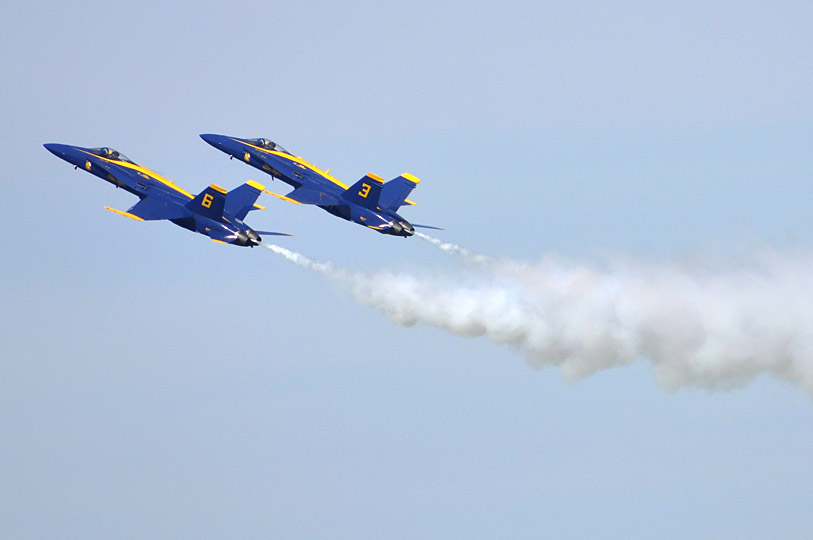
During the maneuver the two jets slow down to 120 MPH as they pitch the nose up to 45 degrees.
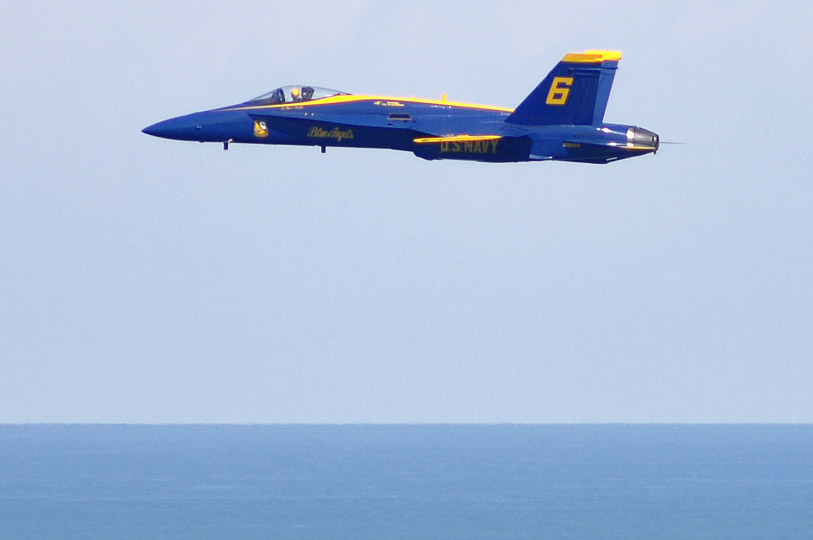
Blue #6 comes back into focus.
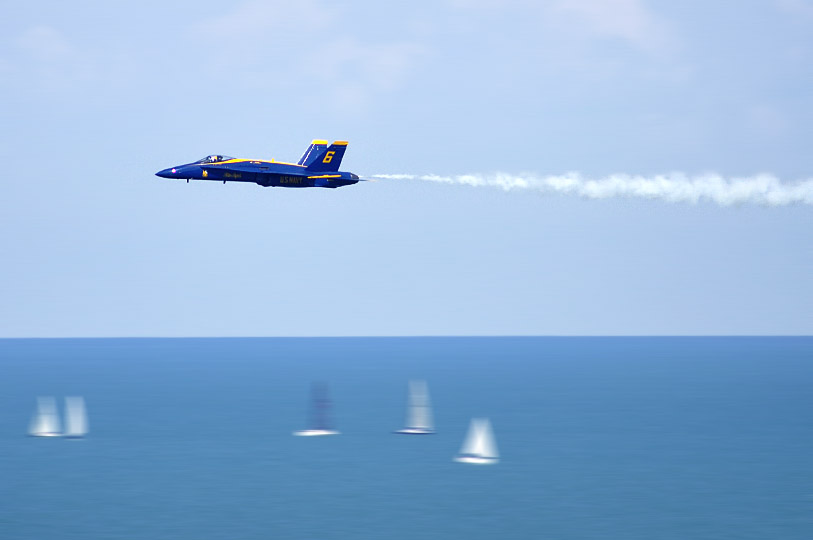
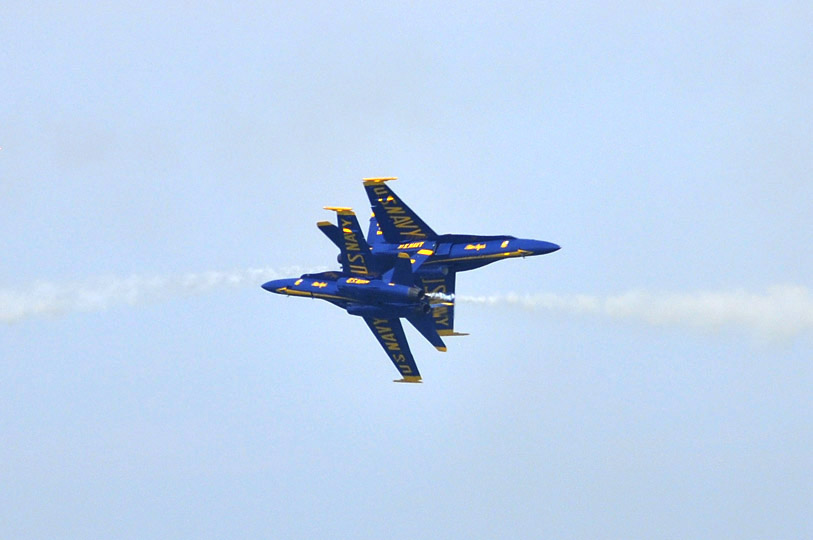
The solo Blues #6 and #3 perform an opposing four-point hesitation roll.
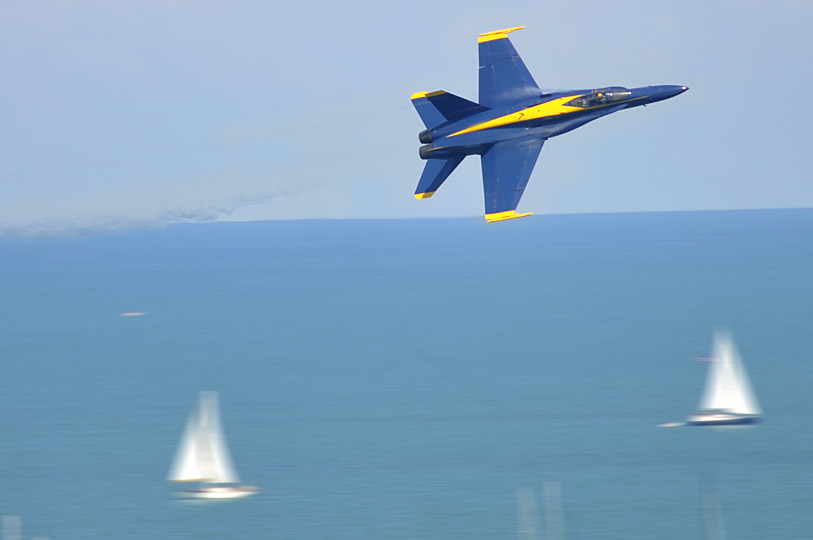
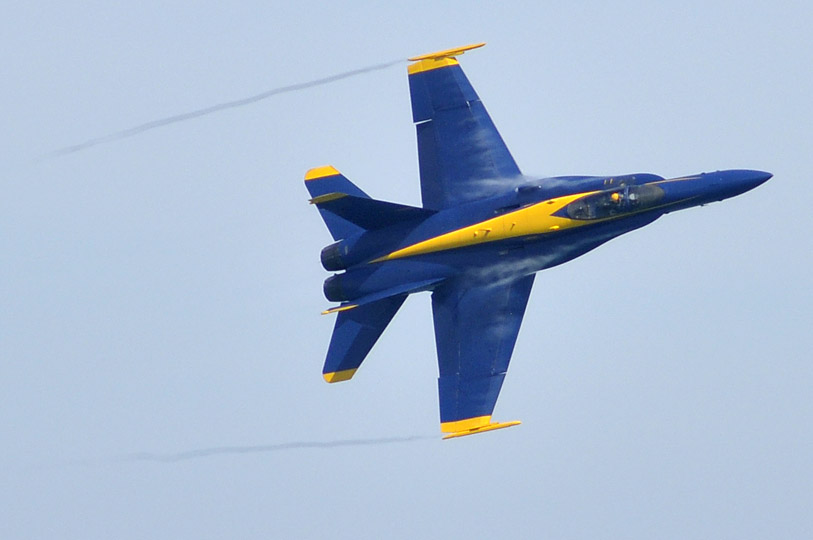
Water condensation in the strake vortices during the tight maneuver.
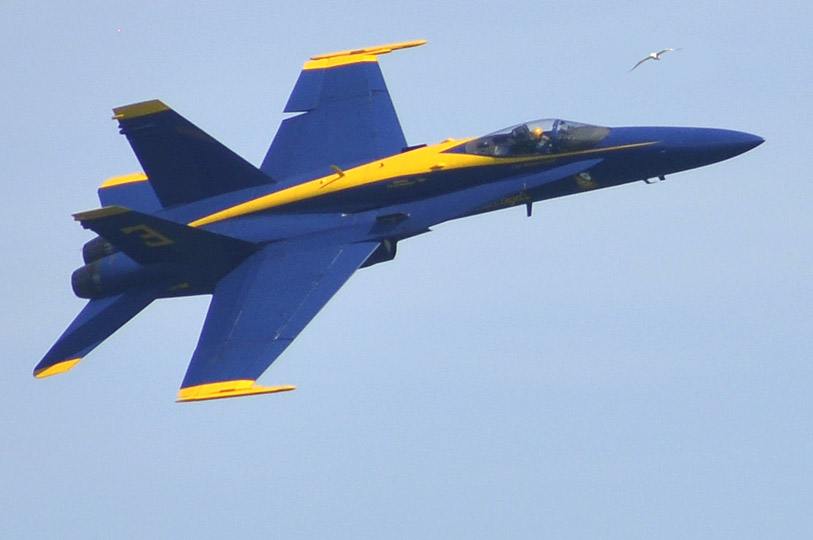
Blue #3 levels out and shares the airspace with a seagull.
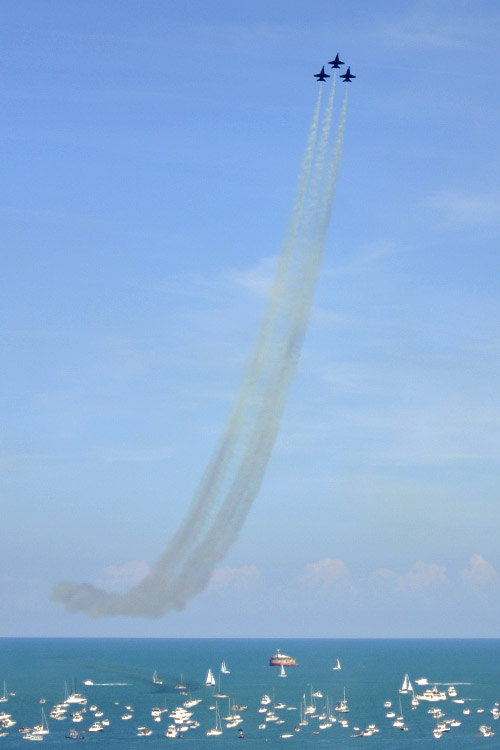
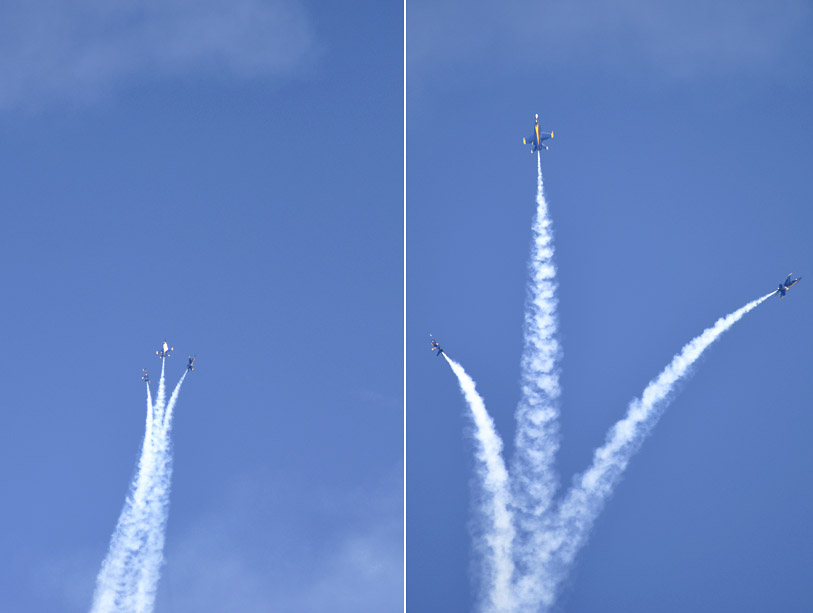
Vertical break, always a crowd pleaser.
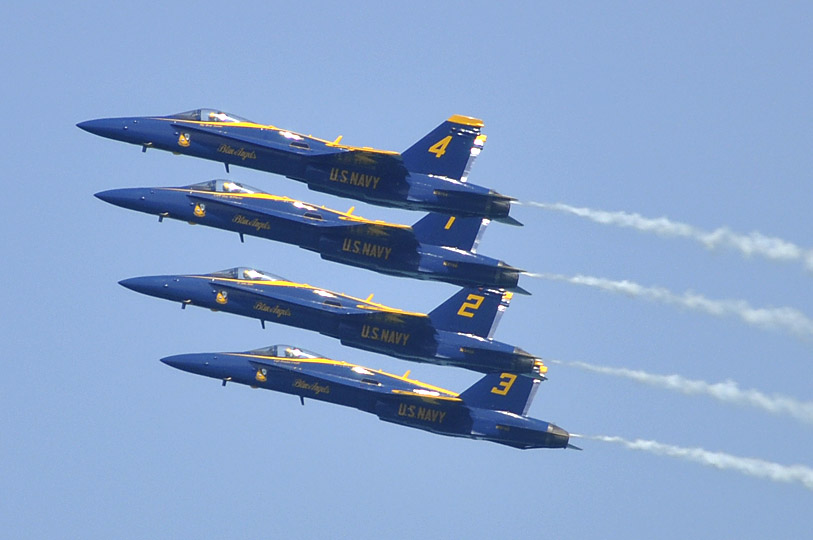
The four pilots are stacked down and aft on a 45 degree bearing line to establish a right echelon formation.
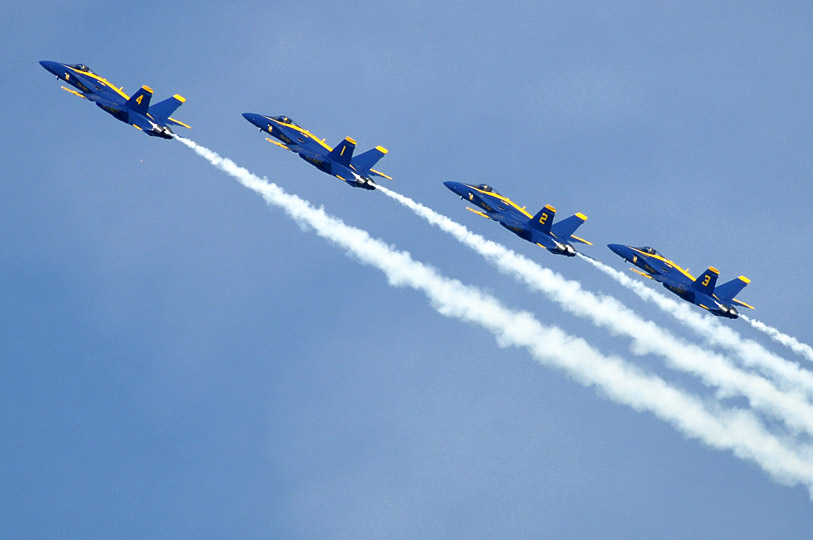
(The move looks more impressive when they're in strict profile.)
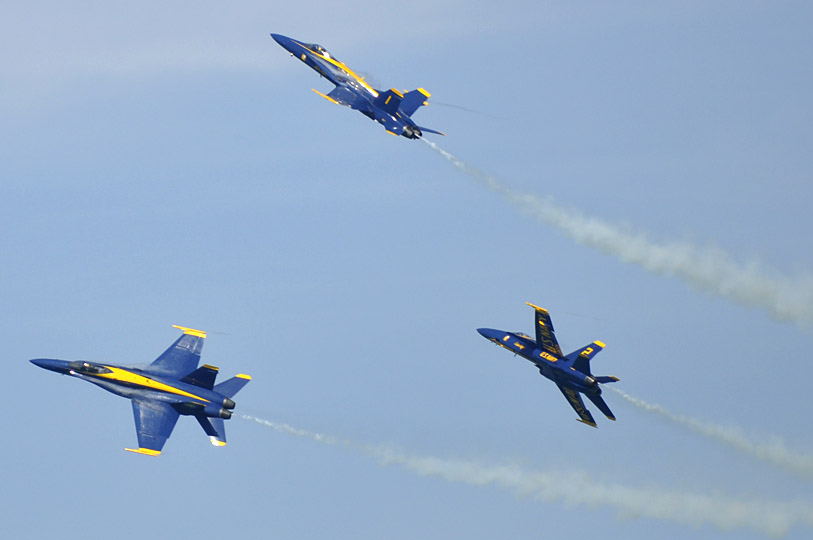
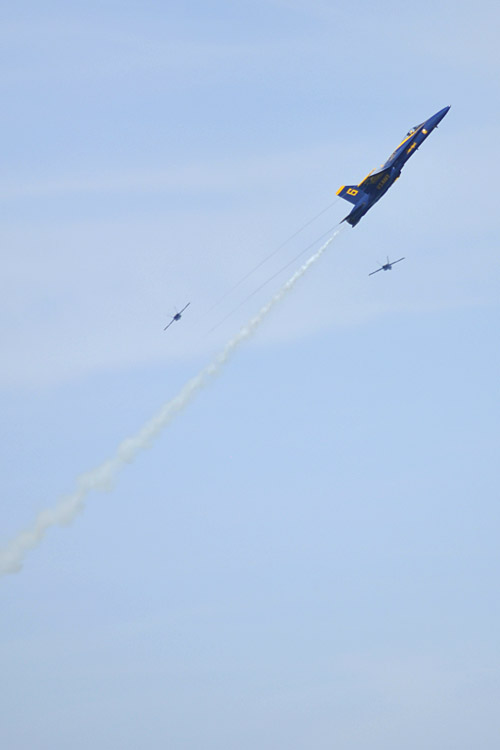
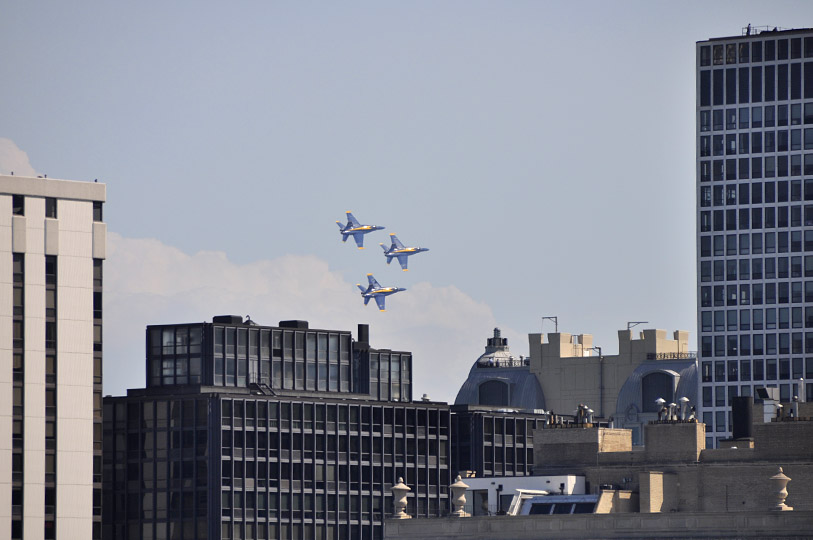
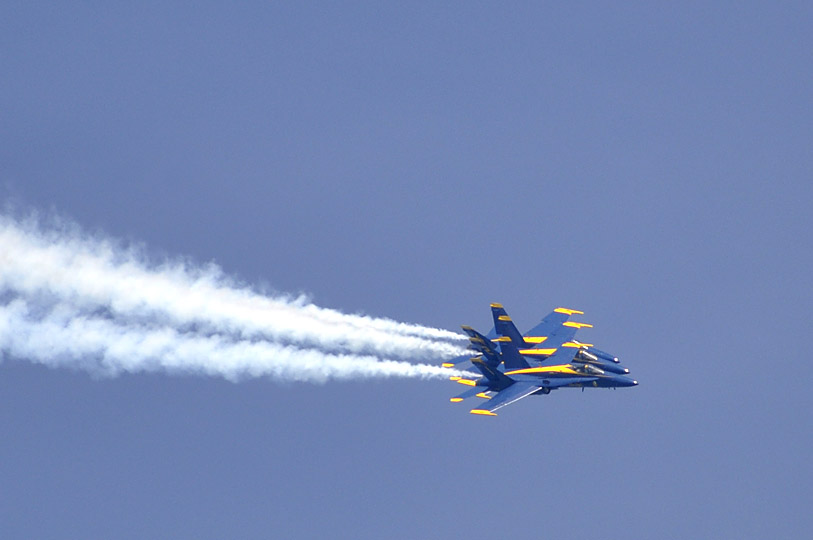
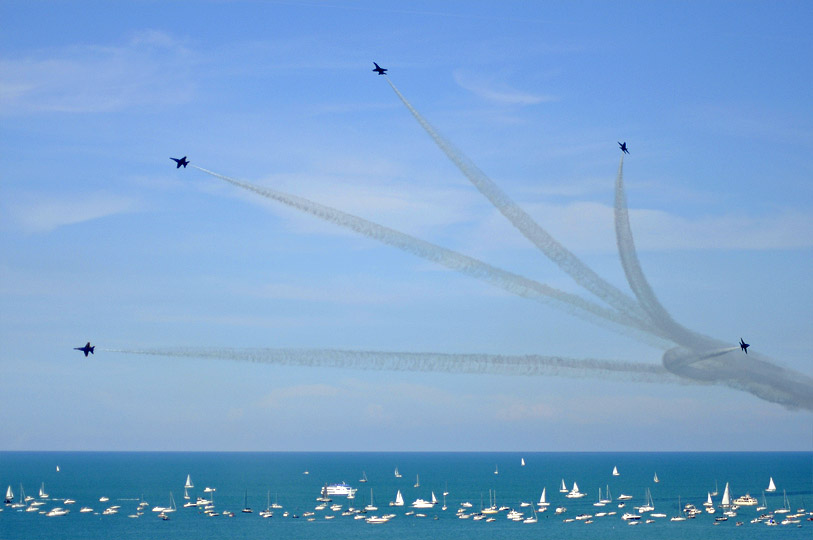
The Blue Angels finish with a "Delta Break-Out" grand finale.
